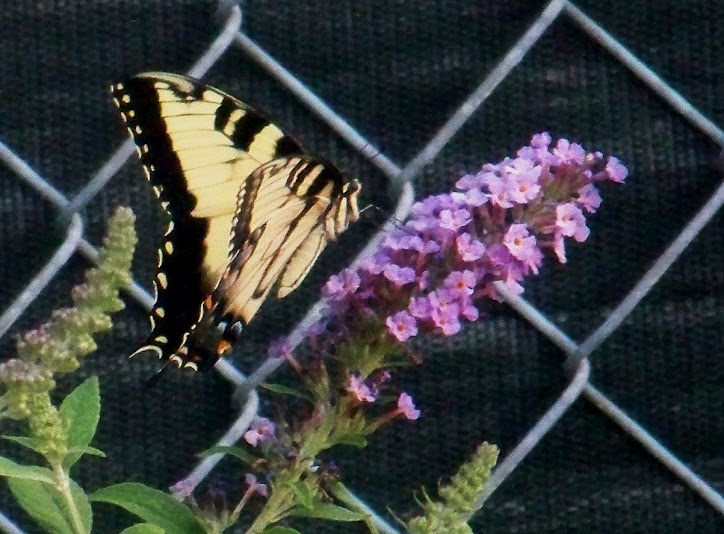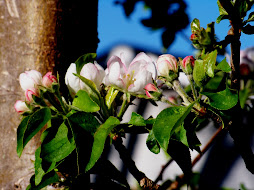Start Potatoes Soon For a Good Crop
Soon it will be time to plant potatoes in the South Central Kansas – and all zone 6 areas. Now is the time to go to your local nursery and pick out some good “Seed Potatoes”. Planting time is only a week or 2 away!
How Many Seed Potatoes Should I Buy?
The going rate for seed potatoes here in Wichita, Kansas is about 89 Cents a pound. I would suggest at least 3 lbs. If this is your first time planting potatoes. This will give you around 30 plants after cutting the “Chits” - 1 to 2 inch sections of potatoes with 1 or 2 “eyes” each.
Preparing the Potatoes Before You Plant
Cut each potatoes into chunks (chits) each with at least one or two eyes a piece. This should be done 3 or 4 days before you plant. This allows for the potato cuts to skin over and gives the pieces resistance to rot in the ground. A good “chit” should have eyes at least ½ inch to 1 inch long. To encourage eye growth, you may have the potatoes sit in a dark place in a paper sack for a week or two while they grow good eyes. This can be done before or after you cut the chits.
How to Plant
The traditional way to plant potatoes is to make a furrow about 4 to 6 inches deep. Lay in one potato – eyes looking at you – every foot. Rows should be about 18 to 24 inches apart for easy weeding and room for the roots to grow. Cover each “Chit” with about 2 inches of soil. Water them in with about the equivalent of an inch of rain. As the plants grow, build up more soil around the stem. Keep pulling more soil around the stem as the plants grow, leaving about 4 to 6 inches below the branches at all times or half the stem. New potatoes will form around the covered over stem as it grows and increase your yield – so I have heard. I have never seen much difference. One may also pile straw or compost around the stem.
When to Plant
Potatoes like to grow in cool weather. In South Central Kansas, this is somewhere between early Spring. Traditionally, that is around St Patricks Day, or March 17. Or after the soil has begun to thaw and is workable. We are talking about USDA Zone #6. If you live further North, wait a few weeks. If you live more in the South, You may be able to start near the first of March. In parts of California or Florida, you might even wait until fall to plant your potatoes to avoid the heat.
How Much Sun Do I Need
While potatoes do not grow well in the heat of Summer, they Do need lots of sun. At least 8 hours a day or more. Watch out for those big shade trees.
When to Harvest Potatoes
Early Baby Potatoes:
For those delicious baby potatoes, as soon as you see flowers on the potatoes, you should be able to gather these. Gently reach into the loose soil around the roots and pull a few out. Recover the roots.
Mature Potatoes: Potatoes are finished when the tops start falling over in the Fall. No more growth will occur. You may feel confident about digging up and harvesting them at this time. However, you can leave them in the ground for a few weeks if you like as long as the soil is not wet or too damp. You could harvest each plant and allow the potatoes lay exposed for a few days to dry before you store them away in a cool dry airy place for Winter Storage.
If possible, use a Garden Fork. Dig down about a foot out from the center of the plant to avoid stabbing the potatoes. If you just pull the plants up, you risk leaving half the harvest underground!
A plot 6 foot wide and about 10 foot long will hold about 30 plants. Set a plant every foot or so in rows about 2 foot apart.
Figuring that the average number is 6 potatoes per plant, you could harvest around 180 or more full-sized potatoes by the end of the season. Around July for potatoes. In about the same space as your car takes up in the garage. Not bad at all! About 2- 10 1b bags at the super market. Or 10 Kilograms.
Your Soil Should be Light
Potatoes should be planted in a light sandy soil. If you can test it, the soil should be about 5.5 to 6 pH. Or a little towards the acid side. If your soil is on the clay side – dries out to the texture of a sidewalk, add lots of rotted leaves (leaf mold) or other mature compost to lighten it up so the tubers can grow.
Should I Fertilize?
Do not over fertilize if your soil is already fairly fertile. A little composted cow manure in the planting hole is probably OK. To much nitrogen, and your potatoes grow Tons of beautiful leaves – and no potatoes. Much like Tomatoes do! If your soil is fairly heavy, mix in some pine needles from under the tree in the back yard. They will help lighten the soil and add a little acid while they are at it. Potatoes like Potassium and Potash. The cow manure can provide some of that. A small handful of Wood Ashes will provide organic Potash. Beware of too much Nitrogen. You could raise a beautiful crop of leaves – and little or no potatoes.
How Much Water?
Potatoes need about an Inch of Rain a week. Water accordingly. However, too much water will cause potato rot etc. Just keep them moist throughout the growing season.
____________________________________________________________________________________________________________________
Container Grown Potatoes
Some of these methods are perfect if you are an Apartment Dweller and don’t seem to have room for growing plants. All you need is a few feet or less of space on a Patio, Balcony overlook or even in a Big Flower Pot on your front steps. Or put them in the flower bed and tell the landlord they are flowers! If you have a tiny area to put a pot or container, good sun during the morning and cooling shade in the afternoon; your good to go. However, keep a few feet away from hot sun-bathed walls to avoid cooking your plants! All you need then is a pitcher to add water once a day and 5 minutes time after work to tend to your plants.
Stack Old Tires
I have never tried growing potatoes in a container but I plan to try a few systems this year. Some people stack old car tires up and fill them full of soil. You could probably plant 4 or 5 potatoes in such a stack. However, Hot Tires in the Sun – especially when they are not to old – can give of toxic fumes. This cannot be good for the potatoes – or you!
I don’t recommend this method. At least use old tires if you want to try this to reduce the risk.
Build a Board Box
Put 4 – 2 x 2 X 3 ft stakes in a square. 2 foot to a side. Nail or Better, Screw 2 by 6 X 2FT Cedar or Redwood Boards at the bottom. Put the soil mixture in and gradually add boards up the sides as the plants grow. When the plants flower, you might unscrew the bottom boards and reach in to harvest “New (baby) potatoes early on in the season. Remove all the sideboards to harvest in the fall. Do not use Treated Lumber because of the toxic nature of these products. This is why Cedar and Redwood is superior for this method. Pine will only last one season or two. The others can be used for years. Especially Redwood.
Potato Sacks
These sacks for growing potatoes only require that you add soil and set anywhere there is good light and not to how. However, the prices (I feel) are outrageous. Instead, I am buying “Green” grocery sacks from the grocery stores and the Big Box Stores. I will put soil in them and try this method out. I got mine from WalMart for $1.00 each. What ever you use, be sure it drains well or your potatoes will rot. I am also going to try large Plastic Carry bags that come free and punch a few pencil sized holes in the bottom for drainage. These might work well set in old tires for support and reduce the risk of toxic gases from them when they sit in the hot sun. Also the tires will hold the bags upright.
Trash Cans/Plastic Tubs
This sounds like a pretty good idea, although I would go for old steel cans maybe with rusted bottoms. Seems like a good use for them. If they don’t have holes, put several in the bottom. You can do this easily and quickly with a portable drill. Just turn the Plastic Tub or Can upside down and using a ¼ inch bit, drill several holes from the center out to the edge of the bottom.
Compost/haystack Method
I have never tried this method but I understand it is not conducive to growing well if you have rodents around! Otherwise I hear it works fairly well and is an easy and quick way to grow potatoes. Just scatter the potato “Chits” (eyes up) about a foot apart on top of loose soil. Throw compost or straw over them. Water well. As the plants grow up through the straw or compost, add more until they bloom. To harvest pull the straw back and pick the potatoes.
Raised Beds
This is my personal favorite. Using old 2 x 6 (or wider) lumber and 4 – 2 x 2 stakes for corners. Cut one 8 or 10 ft length of lumber in half to make 2 – 4 or 5 foot ends. Nail to 2 – end stakes. To finish up, nail two side boards (8 or 10 ft) to the end stakes for sides of the Raised Bed. Your done. Add a good soil/compost mix and put your potatoes in .
4FT X 4FT Beds are also convenient. You can put 6 or 8 plants in one of these and like the long beds, and have complete control of the conditions in which you grow your plants. That’s why I favor these beds.
Again, Cedar or Redwood is resistant to rot and will give you several years (up to 20 for Redwood and 5 or 10 for Cedar) of good use.
A Special Note
Always keep growing potatoes covered to avoid exposure to sunlight. Exposure to sunlight will cause them to turn a greenish color on the skins. Another reason for heaping soil or compost around the main stem of the plant as it grows. This greenish coloring is actually a poisonous substance called Solanine. If you see this on a potato, just cut it away along with the eyes of a potato before you cook them.
Growing Potatoes can be fun and you can’t beat the flavor or “new” or baby potatoes 1 or 2 inches around. Why not try it This year!
Cheers!
GrandBob
This article is fully protected by Copyright and should not be reproduced by mechanical printing or electronically duplicated without the author’s permission.
Copyright 2010 Robert Mader



